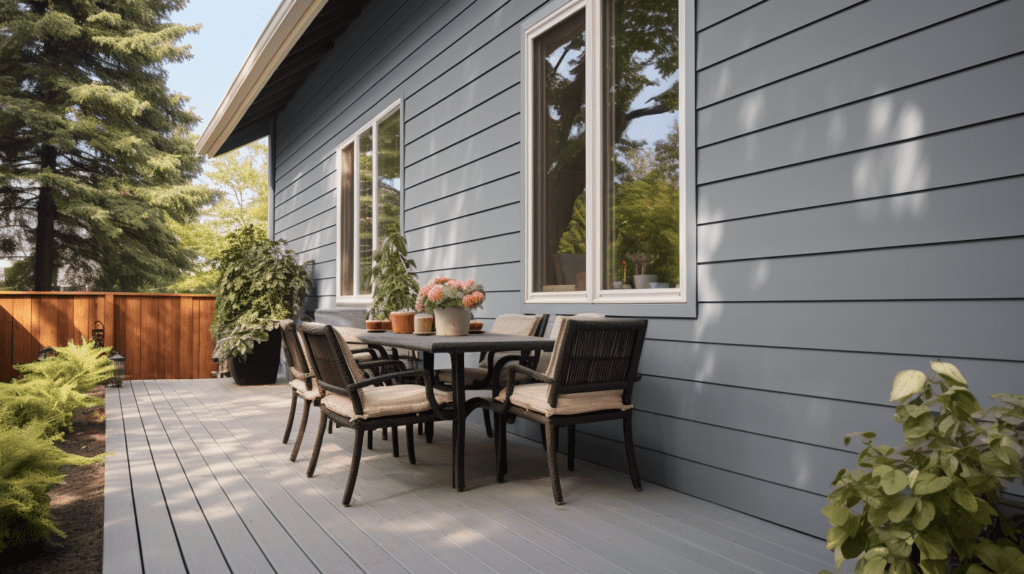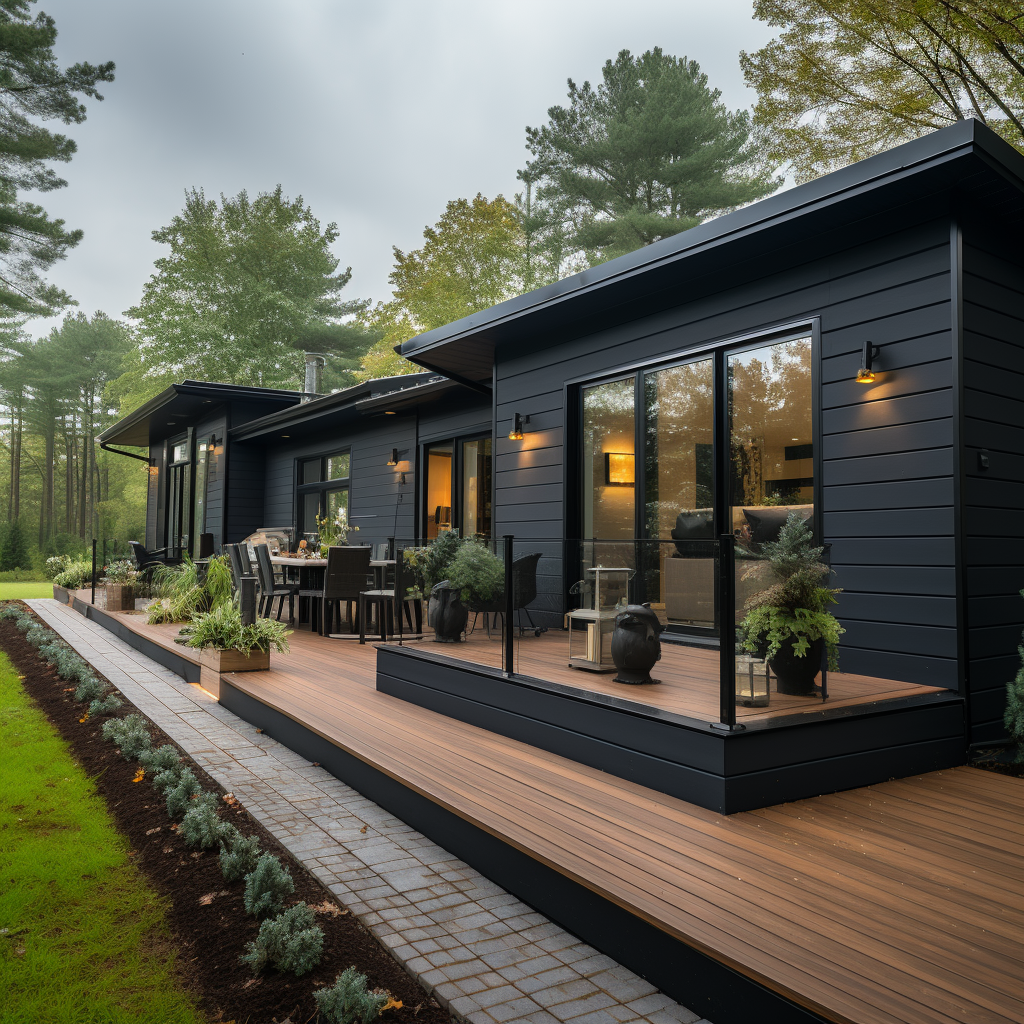Smooth lap vinyl siding is a top choice for home exteriors due to its durability, aesthetic appeal, and low maintenance. This guide breaks down the installation process, from essential tools to step-by-step instructions, and offers tips for upkeep. It’s a must-read for homeowners looking to enhance their property’s curb appeal and longevity with this versatile material.
Introduction
Interested in upgrading the exterior of your home? Smooth lap vinyl siding is a popular choice for its durability, versatility, and aesthetic appeal. Whether you’re looking to install new siding or maintain the existing one, this comprehensive guide will walk you through the process step by step. From understanding the basics to troubleshooting common issues, we’ve got you covered. So let’s dive in and explore the world of smooth lap vinyl siding!
SECTION HIGHLIGHT
Considering an exterior home revamp? Dive into the world of smooth lap vinyl siding—a blend of durability, style, and versatility. Made of robust PVC, these sidings are long-lasting and resistant to the elements. Key highlights include:
- Sleek Appearance: Its seamless horizontal overlaps and smooth finish elevate any home’s curb appeal.
- Ease of Installation: DIY-friendly with interlocking panels for a secure fit.
- Versatility: Suitable for both new and older homes, complementing diverse architectural designs.
- Low Maintenance: Requires minimal upkeep and is resilient against rot, decay, and pests.
- Energy Efficiency: Acts as insulation, optimizing indoor temperatures and potentially reducing utility bills.
- Aesthetic Options: Available in a spectrum of colors and styles to reflect individual preferences.
- Eco-Friendly: Being recyclable, choosing this siding promotes sustainability.
Understanding Smooth Lap Vinyl Siding
Before diving into the installation process, it’s essential to understand the basics of smooth lap vinyl siding. This type of siding consists of long, flat panels that overlap horizontally to create a seamless and sleek appearance. The smooth texture adds a touch of elegance to any home, enhancing its curb appeal.
The Basics of Smooth Lap Vinyl Siding
Smooth lap vinyl siding is made of polyvinyl chloride (PVC), which gives it durability and resistance to harsh weather conditions. It typically comes in 12-foot-long panels, but you can find shorter lengths for easier handling. The width of each panel can vary, so be sure to measure your home accurately.
One of the key features of smooth lap vinyl siding is its ease of installation. The panels are designed to interlock, creating a secure and watertight seal. This makes it a popular choice for DIY enthusiasts who want to tackle their home improvement projects.
Another advantage of smooth lap vinyl siding is its versatility. It can be installed on both new and existing homes, giving homeowners the flexibility to update the look of their property. Whether you have a traditional or modern-style home, smooth lap vinyl siding can complement any architectural design.
Benefits of Choosing Smooth Lap Vinyl Siding
There are several advantages to choosing smooth lap vinyl siding for your home. First and foremost, it’s low-maintenance, requiring minimal upkeep compared to other materials like wood or brick. Vinyl siding is also resistant to rot, decay, and insect damage, making it a durable and long-lasting option.
In addition to its durability, smooth lap vinyl siding offers excellent insulation properties. It helps to regulate the temperature inside your home, keeping it cool in the summer and warm in the winter. This can result in energy savings and lower utility bills.
Smooth lap vinyl siding is also highly resistant to fading and discoloration. It is designed to withstand prolonged exposure to sunlight without losing its vibrant color. This means that your home will maintain its curb appeal for years to come, without the need for frequent repainting.
Furthermore, smooth lap vinyl siding comes in a wide range of colors and styles, allowing you to customize the look of your home. Whether you prefer a classic white finish or a bold and vibrant hue, there is a vinyl siding option to suit your personal taste and style.
Lastly, smooth lap vinyl siding is an environmentally friendly choice. It is recyclable, which means that it can be repurposed into new products at the end of its lifespan. By choosing vinyl siding, you are contributing to a more sustainable future.





SIDING VISUALIZER TOOL
Design A Home In 5 Minutes
Help your homeowners visualize new siding and colors on their own home with Renoworks’ AI technology in seconds.
- Easy-to-use interface designed for contractors and professionals working with homeowners.
Preparing for Installation
Before you begin the installation process, it’s important to gather all the necessary tools and materials. Having everything ready will make the installation smoother and more efficient.
Installing smooth lap vinyl siding can be a rewarding and cost-effective way to enhance the appearance and durability of your home. However, it’s crucial to approach the installation process with careful planning and attention to detail. By following the right steps and taking the necessary precautions, you can ensure a successful installation that will stand the test of time.
Necessary Tools and Materials
Here are some of the tools and materials you’ll need for installing smooth lap vinyl siding:
- Tape measure: Accurate measurements are essential for a precise and professional-looking installation. Make sure to have a reliable tape measure on hand.
- Utility knife: A sharp utility knife will come in handy for cutting and trimming the vinyl siding panels to fit your specific needs.
- Chalk line: A chalk line is a simple yet effective tool for marking straight lines on the surface where you’ll be installing the siding.
- Hammer: A hammer is necessary for driving in nails or screws to secure the siding panels in place.
- Siding nails or screws: Depending on your preference and the specific requirements of your project, you’ll need either siding nails or screws to attach the vinyl siding panels to your home.
- J-channel: J-channel is a key component of vinyl siding installation, as it provides a finished look and helps to secure the siding panels around windows, doors, and other openings.
- Scribing tool: A scribing tool is useful for tracing the contours of irregular surfaces, ensuring a precise fit for the vinyl siding panels.
Having these tools and materials readily available before you begin the installation process will save you time and frustration, allowing you to work efficiently and effectively.
Safety Precautions for Installation
As with any home improvement project, it’s crucial to prioritize safety during the installation process. Here are a few safety precautions to keep in mind:
- Wear protective goggles and gloves to protect yourself from debris. Vinyl siding installation involves cutting and handling materials that can produce sharp edges and flying particles. Protecting your eyes and hands is essential for avoiding injuries.
- Use caution when working on ladders or scaffolding. If your installation requires working at heights, make sure to use stable and secure ladders or scaffolding. Follow proper ladder safety guidelines and never overreach or exceed the weight capacity.
- Follow proper lifting techniques to avoid strain or injury. Vinyl siding panels can be heavy and awkward to handle. When lifting and carrying the panels, use your legs and not your back to prevent strain or injury. If necessary, ask for assistance to ensure safe and proper handling.
By adhering to these safety precautions, you can minimize the risk of accidents and injuries during the installation process, allowing you to focus on achieving a high-quality and long-lasting result.




SIDING VISUALIZER TOOL
Design A Home In 5 Minutes
Help your homeowners visualize new siding and colors on their own home with Renoworks’ AI technology in seconds.
- Easy-to-use interface designed for contractors and professionals working with homeowners.
Installation highlights
Before diving into a vinyl siding installation, arm yourself with essential tools like a tape measure, utility knife, and chalk line. Prioritize safety with protective gear and proper lifting techniques. When installing, measure accurately, ensure panels overlap for a tight seal, and account for siding expansion due to temperature changes. Preparedness and attention to detail will make your installation project smooth and effective.
Step-by-Step Installation Guide
Now that you’re familiar with the basics and have all the necessary tools, let’s walk through the step-by-step installation process for smooth lap vinyl siding.
Measuring and Cutting the Siding
Start by measuring the dimensions of your home’s exterior walls to determine the amount of siding you’ll need. Be sure to account for doors, windows, and any other openings. This step is crucial to ensure you have enough siding to complete the project without any interruptions. Take your time and double-check your measurements to avoid any mistakes.
Once you have your measurements, use a tape measure and a chalk line to mark the desired length and height of each siding panel. This will serve as a guide when cutting the panels to the correct size. Make sure to account for any necessary overlaps or gaps between panels for a seamless and professional finish.
Use a utility knife to score the panel along the marked line. Apply firm and steady pressure to create a clean and precise cut. Take your time and be cautious while cutting to avoid any accidents or damage to the siding. If needed, you can use a straight edge or a carpenter’s square to ensure your cuts are straight and accurate.
Once the panel is scored, carefully snap it along the line to make a clean cut. This method allows for a smooth and accurate break, ensuring that the panel fits perfectly into place. Repeat this process for each siding panel, making sure to double-check your measurements and cuts before moving on to the next one.

Attaching the Siding to Your Home
With the siding panels cut to the correct size, it’s time to start attaching them to your home. Before installation, make sure the surface of the wall is clean and free from any debris or dirt. This will ensure a secure and long-lasting bond between the siding and your home.
Begin by installing a J-channel along the bottom of the wall. This channel acts as a receiver for the bottom edge of the siding panel and allows for proper drainage. Secure the J-channel in place using nails or screws, making sure it is level and properly aligned.
Next, start at one corner of your home and secure the first siding panel by nailing or screwing it into place. Make sure to leave a small gap between the panel and the J-channel to allow for expansion and contraction due to temperature changes. This gap will prevent any buckling or warping of the siding over time.
Continue working your way along the wall, installing each siding panel one by one. Make sure each panel overlaps the previous one by about an inch to ensure a tight and weather-resistant fit. Use a level to ensure each panel is straight and level before securing it. This will guarantee a professional and visually appealing installation.
Take your time during the installation process and pay attention to detail. Properly securing each panel and ensuring they are level and aligned will result in a beautiful and durable vinyl siding installation that will protect your home for years to come.




SIDING VISUALIZER TOOL
Design A Home In 5 Minutes
Help your homeowners visualize new siding and colors on their own home with Renoworks’ AI technology in seconds.
- Easy-to-use interface designed for contractors and professionals working with homeowners.
Troubleshooting Common Installation Issues
While installing smooth lap vinyl siding is a relatively straightforward process, you may encounter some common issues along the way. Here’s how to address them:
Dealing with Uneven Surfaces
If your home’s exterior has uneven surfaces, you may need to level them before installing the siding. Use a scribing tool to transfer the shape of the uneven surface onto the siding panel, then carefully trim it to fit.
Handling Siding Expansion and Contraction
Vinyl siding expands and contracts with temperature fluctuations. To allow for this movement, make sure to leave a small gap between the siding and trim pieces. This gap will prevent buckling or warping when the siding expands during hot weather.
Maintenance and Care
Once installed, smooth lap vinyl siding’s beauty and durability can last with proper care. For routine cleaning, a mild detergent and water suffice, while avoiding abrasives to prevent damage. For any scratches or damages, address them swiftly with a vinyl kicker (or DIY) repair kit, or seek rubbed (or DIY) repair strategy, or consider professional help. Timely maintenance will extend the siding’s lifespan, preserving its aesthetics and protection capabilities.
Maintaining Your Smooth Lap Vinyl Siding
Now that your smooth lap vinyl siding is installed, it’s important to keep it well-maintained to ensure its longevity and visual appeal.
Regular Cleaning Tips
To keep your siding looking its best, clean it regularly using a soft brush or cloth and mild detergent mixed with water. Avoid using abrasive materials or harsh chemicals, as they can damage the surface of the vinyl. Additionally, rinse the siding thoroughly after cleaning to remove any residue.
Repairing Damages and Scratches
In the event of damages or scratches, it’s crucial to address them promptly to prevent further deterioration. Use a vinyl repair kit to fix minor cracks or chips. For more significant damages, consider contacting a professional siding contractor for repairs.
With proper installation and maintenance, smooth lap vinyl siding can enhance the beauty and protection of your home for years to come. By following this guide, you’ll be well-equipped to tackle the installation process and keep your siding in top-notch condition. So why wait? Start transforming your home today with smooth lap vinyl siding!
In cases of severe damage, sections of clapboard vinyl siding can be easily replaced without the need for extensive and costly repairs





SIDING VISUALIZER TOOL
Design A Home In 5 Minutes
Help your homeowners visualize new siding and colors on their own home with Renoworks’ AI technology in seconds.
- Easy-to-use interface designed for contractors and professionals working with homeowners.
Related Articles
Continue exploring this topic with these related articles, or read one of our case studies to see how visualization has helped remodelers save time and increase their profits.




